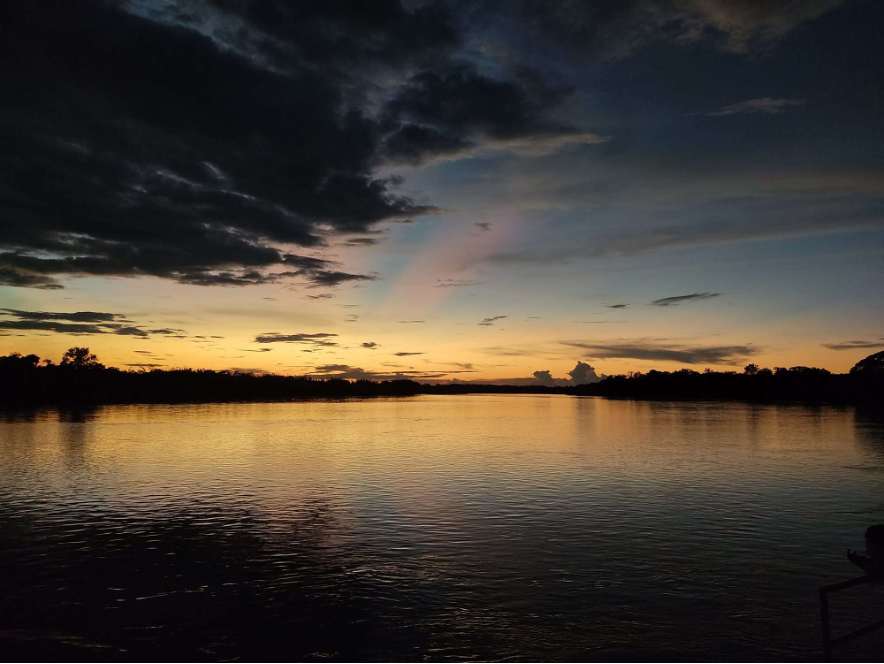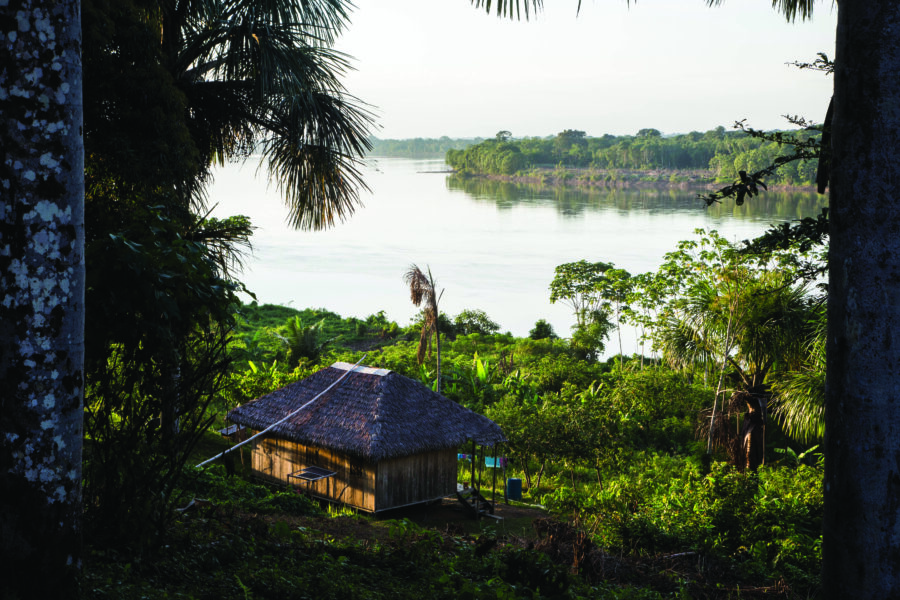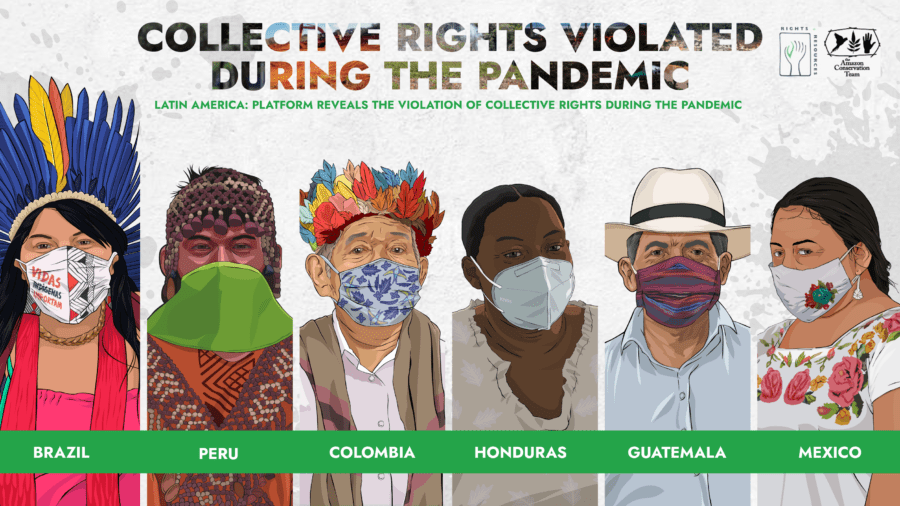This article was originally published in Spanish in La República on January 19, 2024.
(LIMA—19 January 2024): Ten days ago, Congress approved Law 31973 with the signatures of Alejandro Soto and Waldemar Cerrón, which modifies Forestry Law 29763 of 2011. The bill was analyzed by the Executive Branch as well as Indigenous organizations and civil society and approved “at the insistence” of Congress in the dead of night, ignoring requests by Congressmembers Ruth Luque and Susel Paredes to reconsider the vote.
Marc Dourojeanni, a recognized Peruvian specialist in environmental matters, protected areas, and fauna management, noted that the “modification will generate chaos in Peru’s forest management and will without a doubt accelerate deforestation, going precisely against the worldwide trend of extreme concern regarding climate change. Our reputation as an irresponsible country will greatly increase.”
It is important to be clear about the major source of greenhouse gas (GHG) emissions in Peru.
According to Peru’s Ministry of Environment, the country’s largest source of greenhouse gas (GHG) emissions in 2019 (the last year records are available) saw 48 percent of the total 210,404 gigagrams of carbon dioxide equivalent come from land use and changes in land use. These changes in land use are: i) deforestation in the Amazon; ii) energy use (transport, petroleum, gas, manufacturing, construction); and iii) traditional agriculture and waste, among others.
In the United States and Europe, the situation is reversed: the consumption of fossil fuels for energy generation is 70 percent of the total, which contaminates the entire world. The principal commitment of these countries is to reduce emissions. In Peru and other Amazonian countries, the commitment is also to ensure a transition to renewable energy.
Consequently, Peru should be focusing on reducing deforestation. CEPLAN notes that “total forest loss in the Peruvian Amazon reached 2.7 million hectares (ha) between 2001 and 2021. Likewise, the forests, which in 2010 accounted for 69.6 million ha, have dropped to 67.9 million ha.” Unbelievable.
Importantly I should also note that there are people who believe that deforestation in Peru has claimed between eight and 10 million ha during this period, 10 percent of the total.
According to promoters of Law 31373, “nothing more” is language that directly benefits small farmers who have been deforesting their lands for years and who are unable to make progress in their farming today due to not having land titles. As such, this is an attempt to legalize a situation in which harm has already been done and is irreversible. I’m suggesting that such a titling process would not foster more deforestation; quite the opposite.
But it turns out that the Complementary Provision enables the creation of “areas of exclusion for agricultural purposes” which will not need to be classified based on their greater usability, nor will they have to comply with the requirements contained in the prior Law 29763.
“Law [31973] will become a mechanism for impunity, destruction and human rights violations by permitting the establishment of agricultural or agro-industrial activities without prior evaluation if an area has the capacity to be used as forest or agricultural land,” said César Ipenza (Ojo Público, 2/11/23).
Ipenza goes on to say: “This will benefit actors that have previously breached the requirements demanded by law; weaken forest protection and environmental management; ignore the rights of Indigenous Peoples; and incentivize deforestation. In other words, the beneficiaries will be big industry, criminal organizations and actors with a history of environmental crimes.”
We see one beneficiary already: the oil palm sector, which has increased from 15,000 ha in 2000 to 108,000 ha in 2019, an increase of more than 700 percent. This growth has been associated with the loss of the Amazon rainforest, above all in Loreto, Ucayali, San Martín and Huánuco. In addition to this is the impact of oil palm’s significant demand for water. It is important to consider who has been a part of the massive lobbying effort that drove the passing of this law.
And this now brings us back to Francisco Durand’s “broken Peru.” Along with both formal and informal economies is the criminal economy, including corruption. CEPLAN states: “From unfettered agricultural development to wildlife trafficking, corruption has infiltrated all aspects of environmental management.” He continues:
A significant number of the environmental crimes committed in the Amazon are possible in large part thanks to the complicity of bureaucrats, security forces, public prosecutors, [and] regional regulators and politicians. They act as facilitators, permitting land trafficking, deforestation, illegal extraction, and the transportation of natural resources in addition to the processing and sale of wood, gold and fauna.
In addition to these crimes are the assassinations of Indigenous leaders in recent months and years, since in many cases the “new lands” are owned by Indigenous communities. As a result, AIDESEP and the National Organization of Indigenous Andean and Amazonian Women (ONAMIAP), among others, have protested the law.
Another underlying issue is that Peru does not take advantage of opportunities to diversify its production, increase production for national and foreign markets, and create employment because there is no clear policy for promoting environmentally friendly timber-producing plantations, as is done in other countries.
For example, Peru has 72 million ha of forest, much more than the 18 million and two million ha in Chile and Uruguay. However, Chile and Uruguay exported US$3,100 million and US$1,100 million, respectively, worth of wood and timber products in recent years. Peru, on the other hand, exported only US$118 million in 2022. Chile and Uruguay have plans to develop the sector. And Peru? The country is still on autopilot.
Bruno Seminario, author of the monumental work The Development of the Peruvian Economy in the Modern Era: Prices, Population, Demand, and Production Since 1700, sadly deceased, declared in 2021 that in a relatively short interval of time, with an appropriate productivity development policy, “[Peru] could be exporting US$6,000 million annually in processed and cut wood. The advantage is that the timber sector is in the Ucayali Watershed, in the Pucallpa area” (Revista Ideele, 5/11/2021).
But it’s important to remember that the issues are multi-sectoral:
- Climate change and GHG reductions with MINAM, which includes the commitments made at the United Nations Climate Change Conference of the Parties as well as possible violations of European Union export rules;
- The protection of Indigenous Peoples’ and local communities’ rights;
- Fostering productivity development by PRODUCE and the CITE roundtables;
- The increase in exports, which should also be within the purview of MEF;
- The policies of MIDAGRI and SERFOR, which put forth significant effort but receive little political or budgetary support; and
- The struggle against corruption should involve not only the Ministry of the Interior, but also the entire Peruvian government.
This is an urgent priority agenda. However, Congress does everything in the middle of the night, in defense of individual interests that point to the criminal economy, in the midst of the government’s passivity.
“It is incredible that such important changes in the Amazon are reduced to a ‘sole final complementary provision,’ when in reality, the matter merits the entire principal text of a new law on rural and forest development,” said Marc Dourojeanni. Now we know why.






